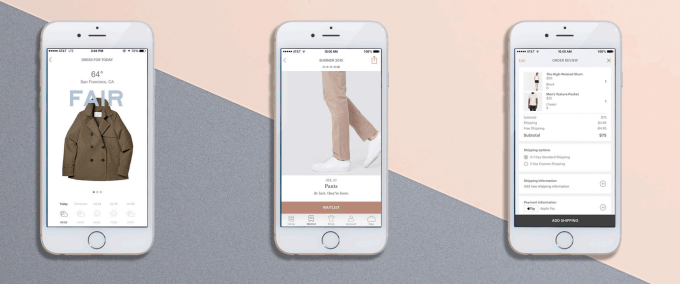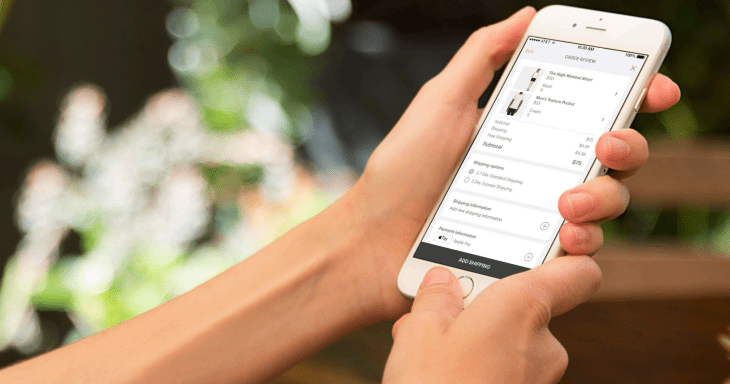Everlane, the fashion shopping site focused on selling high-quality apparel at lower prices than traditional designer retail, has today made the move to mobile. The company has now launched its first native smartphone application with the launch of Everlane on iOS, which allows shoppers to browse and buy its luxury items right from their phone.
However, the app has a couple of interesting features, too, aimed at helping it find traction amid a variety of mobile shopping apps, as well as the clutter of all the other apps users today have installed on their phones.
For starters, Everlane for iOS is also a weather app – yes, a weather app! That’s something that the company hopes will lead to daily app launches, as it will also make suggestions of what to wear alongside the details of the temperature and conditions.
In addition, Everlane will encourage its most devoted shoppers to install and use the app first over the website by featuring all of the company’s “early access” launches exclusively within the app itself. These, by way of background, are Everlane’s often hotly anticipated upcoming items.
Currently, that list includes things like its Petra backpacks, wool wide-leg trousers, mercerized tees, and more. From the app, users can join the waitlist for these items, which tend to sell quickly. Explains the company: “because we believe the app offers a superior shopping experience, we want to incentivize our best customers to use it.”

That’s actually an interesting trick, and one that isn’t something commonly seen on mobile today. Many apps, including those outside the e-commerce space, just try to build mobile-friendly versions of their web experience. They don’t seem to realize that – assuming they’re not a big company like Facebook, Google or Amazon – their app will likely only appeal to and be heavily used by their most zealous customers and fans. And that means they should consider catering to that audience in particular, rather than trying to build something for the mainstream user.
Everlane not only seems to get that, it’s also actively encouraging its hard-core user base to switch to mobile over web.
The app also features an improved checkout flow versus the mobile website that’s streamlined and takes advantage of Apple Pay so customers can place an order with a touch.
A good checkout experience is something that not all commerce sites have been able to achieve in recent years, often forcing shoppers through unwieldy flows that lead to consumers abandoning their carts. In fact, Everlane itself saw something of the same trend before today’s launch.
The company says that 40 percent of traffic to its website was coming from mobile devices, but mobile was only accounting for 18 percent of its sales. While these figures are typical for online retailers, they do imply that Everlane’s mobile visitors regularly failed to convert and actually become customers.
[gallery ids="1189945,1189943,1189942,1189941,1189940,1189939"]
Everlane, which is one of the growing number of vertically integrated direct-to-consumer brands on the market today, is best known for its “radical transparency” value system, which means it discloses the origin story of all its products, and discloses the cost structure, while also abandoning the usual markups associated with retail. That’s how it’s able to sell its higher-quality items for less than you’d see in a traditional retail environment, the company says.
It’s also how the company is making wins on the hiring front, too – for example, Everlane recently hired Gap’s former creative director, Rebekka Bay, as its head of design. Bay was attracted to the startup’s unique business model and was interested in working with a smaller brand and team, she said.
While the company claims it has a passionate and loyal user base, it doesn’t currently disclose its size, how many are repeats or other metrics that could detail how rapidly it’s growing. However, the company did say that its 2013 revenue was $12 million and it’s raised $9 million to date in venture funding. And though it’s not sharing its 2014 revenue, it’s been reported that sales increased by 200 percent year-over-year.
Now with a native mobile experience, the goal will be to see if Everlane will be able to capture the mobile visitors who arrived but didn’t buy and turn them into customers, in order to grow those figures further.
The iOS app is live now on iTunes here.
